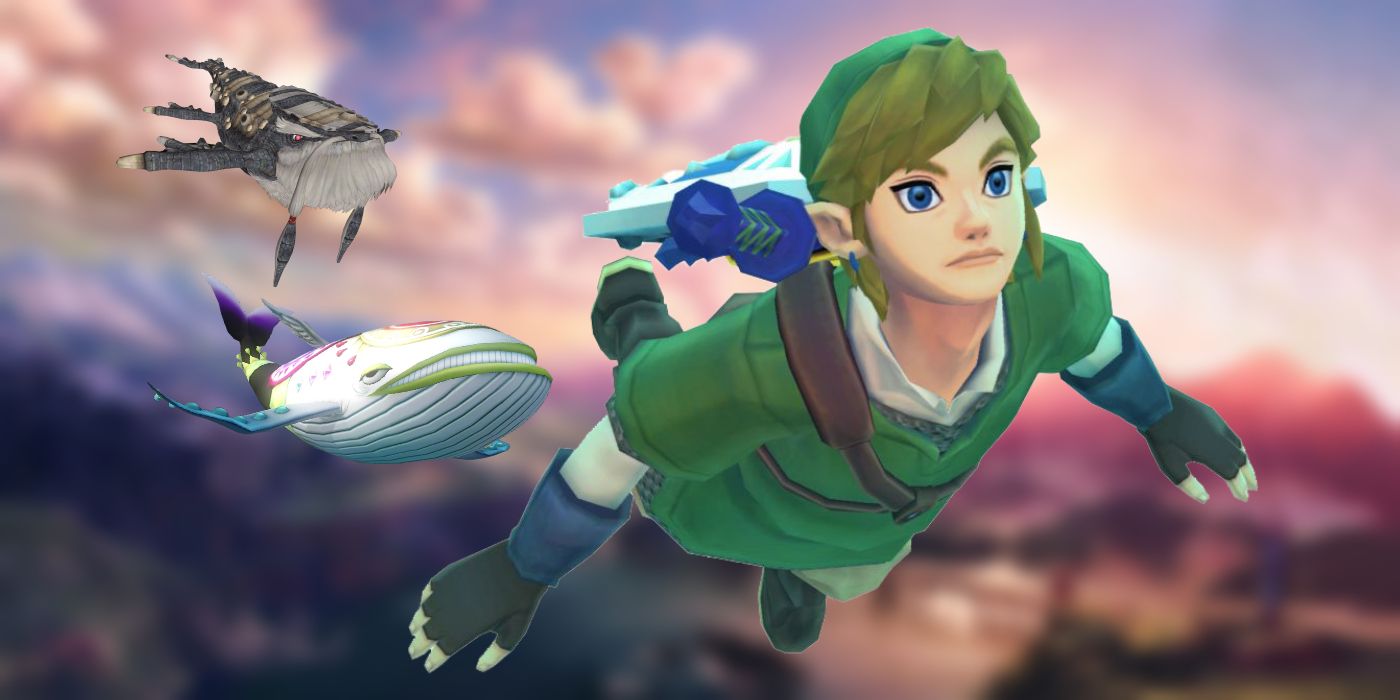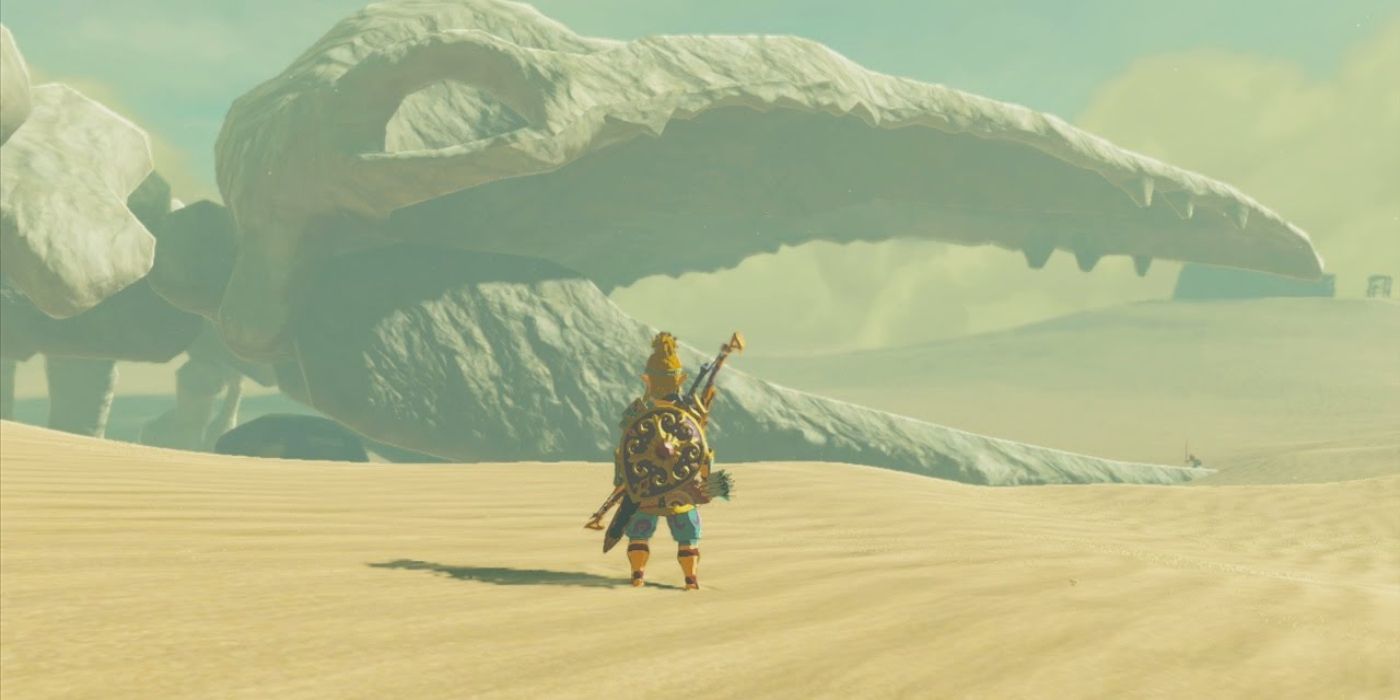The land of Hyrule is a mysterious one in The Legend of Zelda: Breath of the Wild, as the game's open world structure gave Nintendo plenty of room to include oddities and Easter eggs. Some of Breath of the Wild's most intriguing environmental storytelling comes in the form of the three leviathan remains, a.k.a. "Great Skeletons," found around the map. The origins of these bones are never discussed in-game, but fans have a few solid theories as to what the whale skeletons are.
The leviathans can be found in their locations at any point in the game, but Link is sent to find them directly as part of a Breath of the Wild side quest called Leviathan Bones. At the Woodland region's Serenne Stable, three researchers ask Link to bring back images of the leviathans in order to prove whether they went extinct due to a drought, an ice age, or a volcanic eruption. The three possible extinction events point Link to the skeletons' locations: the Gerudo Desert, the frozen Hebra Mountains, and the volcanic Eldin Mountains.
At each of the bones' hidden locations, Breath of the Wild players find imposing whale remains, each with subtle differences. The skeletons could have some relation to the massive rib bones poking out of the ground all across Hyrule, but the three quest-related skeletons are the only ones with skulls attached. These skulls, and the researchers who want pictures of them, are fans' biggest clues as to what Breath of the Wild's leviathans are supposed to be.
What Are Zelda: Breath Of The Wild's Leviathans?
Many Legend of Zelda games have included large, whale-like creatures, and the leading theory among Breath of the Wild fans is that the leviathan bones are meant to resemble three of these characters from previous games. Specifically, the Eldin Great Skeleton's thick head plate and hand-like limbs resemble that of Levias, a flying, whale-like creature seen in Skyward Sword (see Reddit for comparison). The Gerudo Great Skeleton, meanwhile, has small bones that stick up into the air behind its shoulder blades, suggesting it could be Link's Awakening's winged Wind Fish. Finally, the Hebra Great Skeleton resembles a plain, real-life whale, which fans theorize could be the Ocean King from Phantom Hourglass.
These aren't just mere references, however. In fact, the presence of the creatures could have been an early tease of Breath of the Wild's Zelda timeline placement. Breath of the Wild was initially confirmed to take place long, long after any other Zelda game, but fans debated which branch of the series' complicated timeline it fell into. With the leviathan bones, Nintendo may have been trying to tell fans what it later confirmed: Breath of the Wild occurs at the end of all three timelines. The Link's Awakening's Wind Fish could only exist in the "Hero Defeated" branch, and Phantom Hourglass' Ocean King could only exist in the "Hero Triumphs - Adult Era" branch, meaning Breath of the Wild took place at the end of at least those two branches.
The meaning of Levias' presence is a bit unclear, though, since Skyward Sword took place before the Zelda timeline split. Perhaps the Eldin Great Skeleton was meant to reference the "Hero Defeated - Child Era" branch (which originates at the true ending of Ocarina of Time), if Nintendo interprets this as the most direct path forward from Skyward Sword. Regardless, as YouTuber NintendoBlackCrisis pointed out, the Leviathan Bones quest at least seems to have predicted the Zelda fans' behavior following Breath of the Wild's release. Like the in-game leviathan researchers, who accepted the evidence in Link's photos relevant to their theories and then ignored the others, Zelda fans would go on to debate Breath of the Wild's timeline placement, many ignoring the possibility that a placement at the end all three branches could be the solution.
The Legend of Zelda: Breath of the Wild was released for the Nintendo Switch and Wii U on March 3, 2017.


